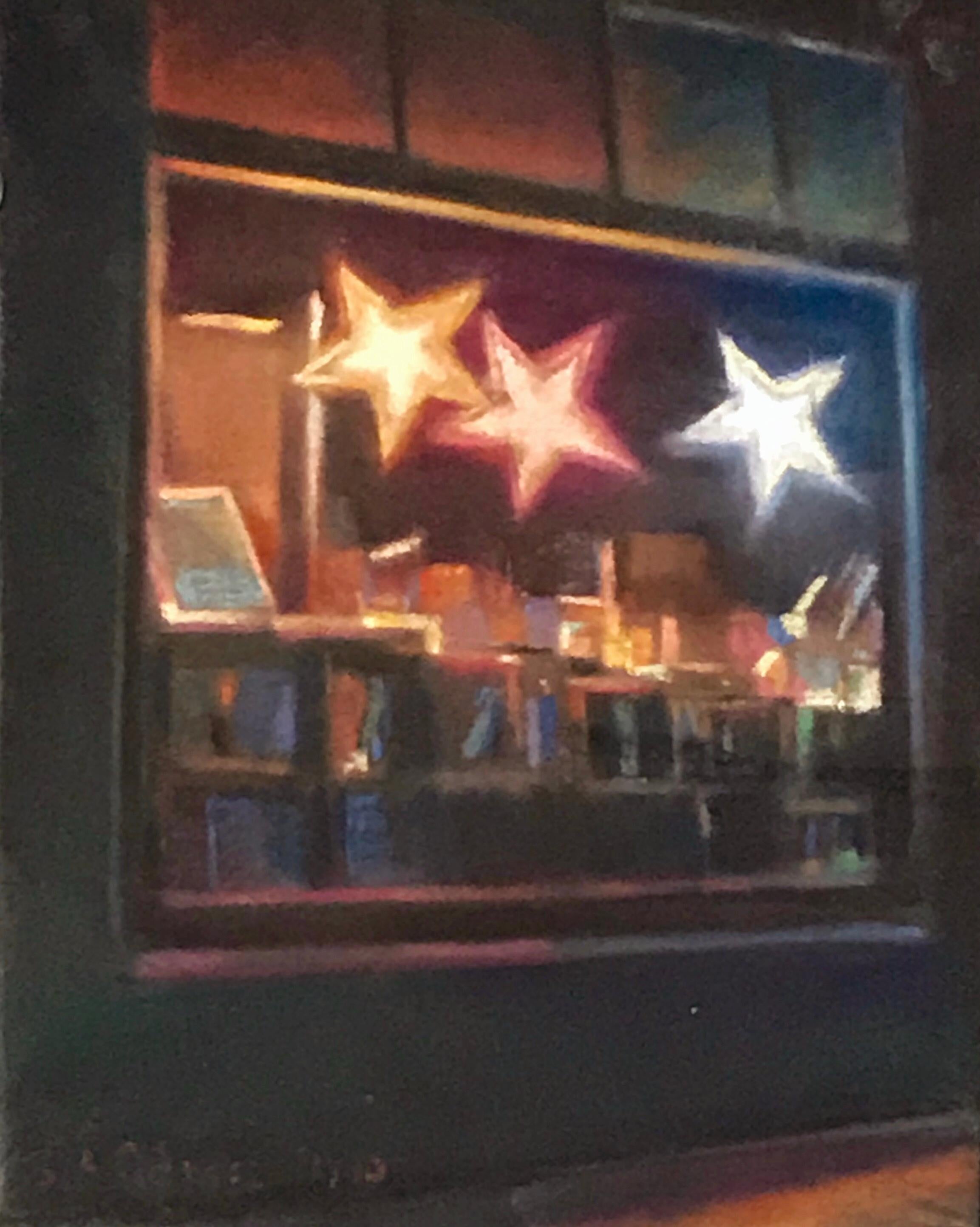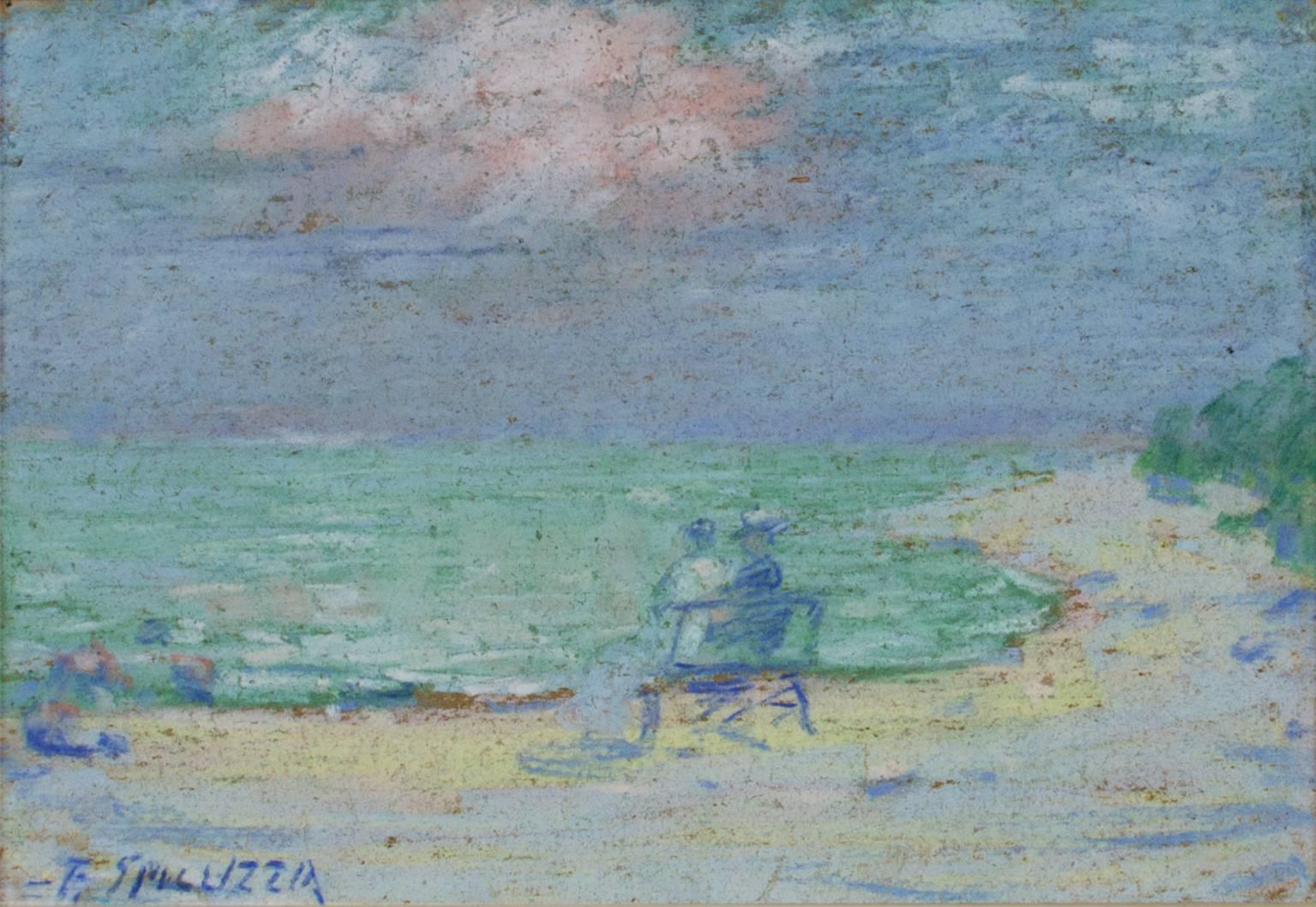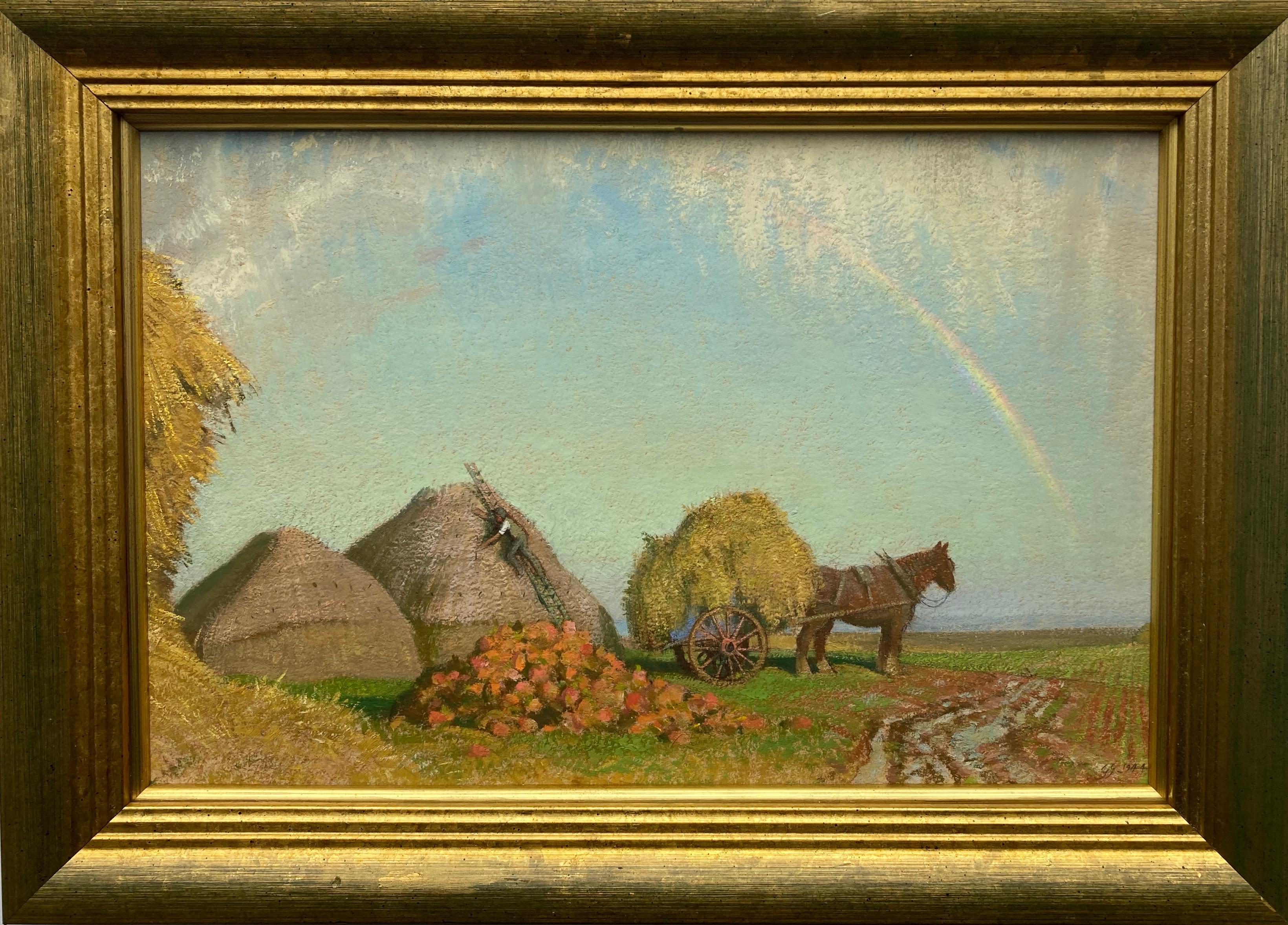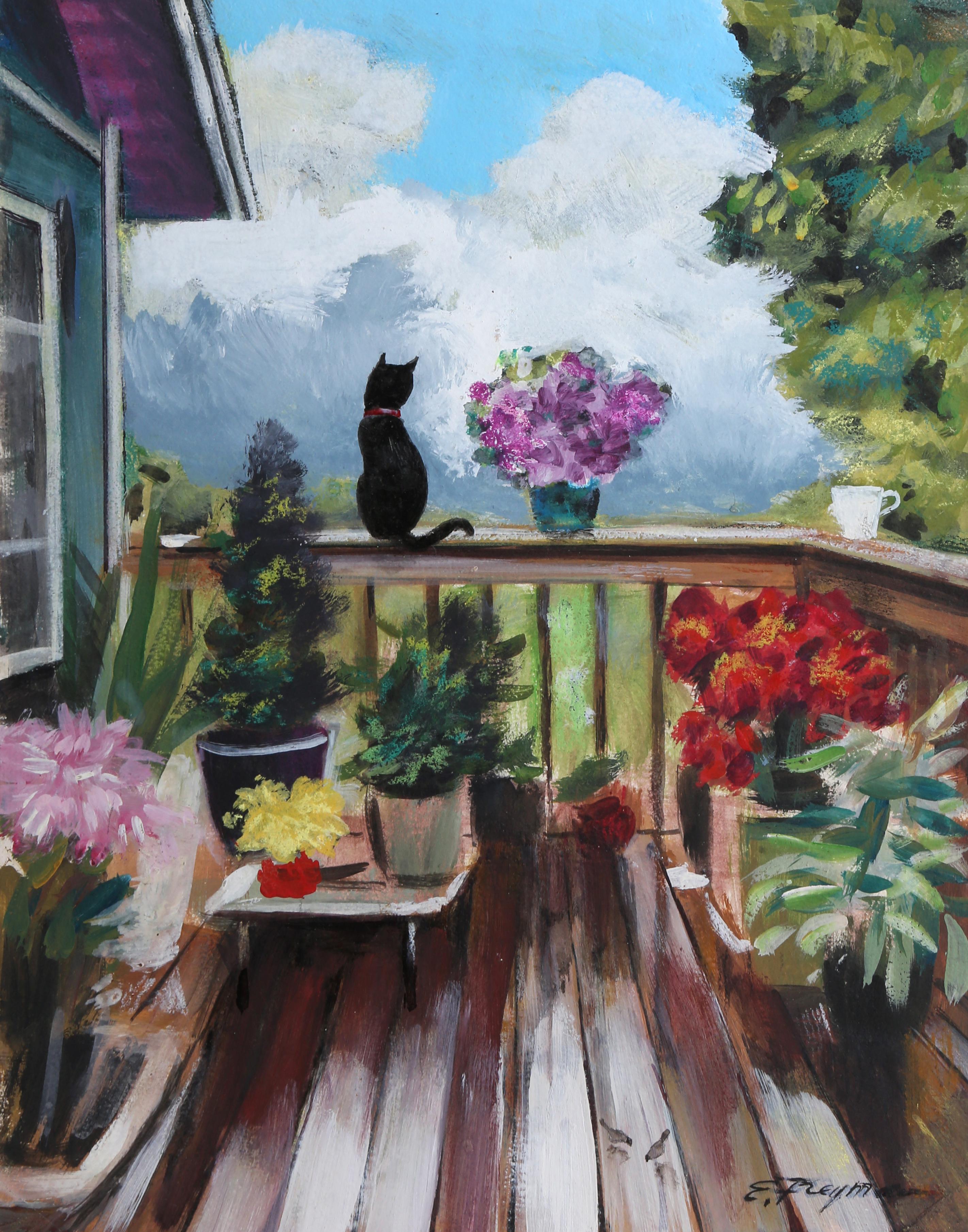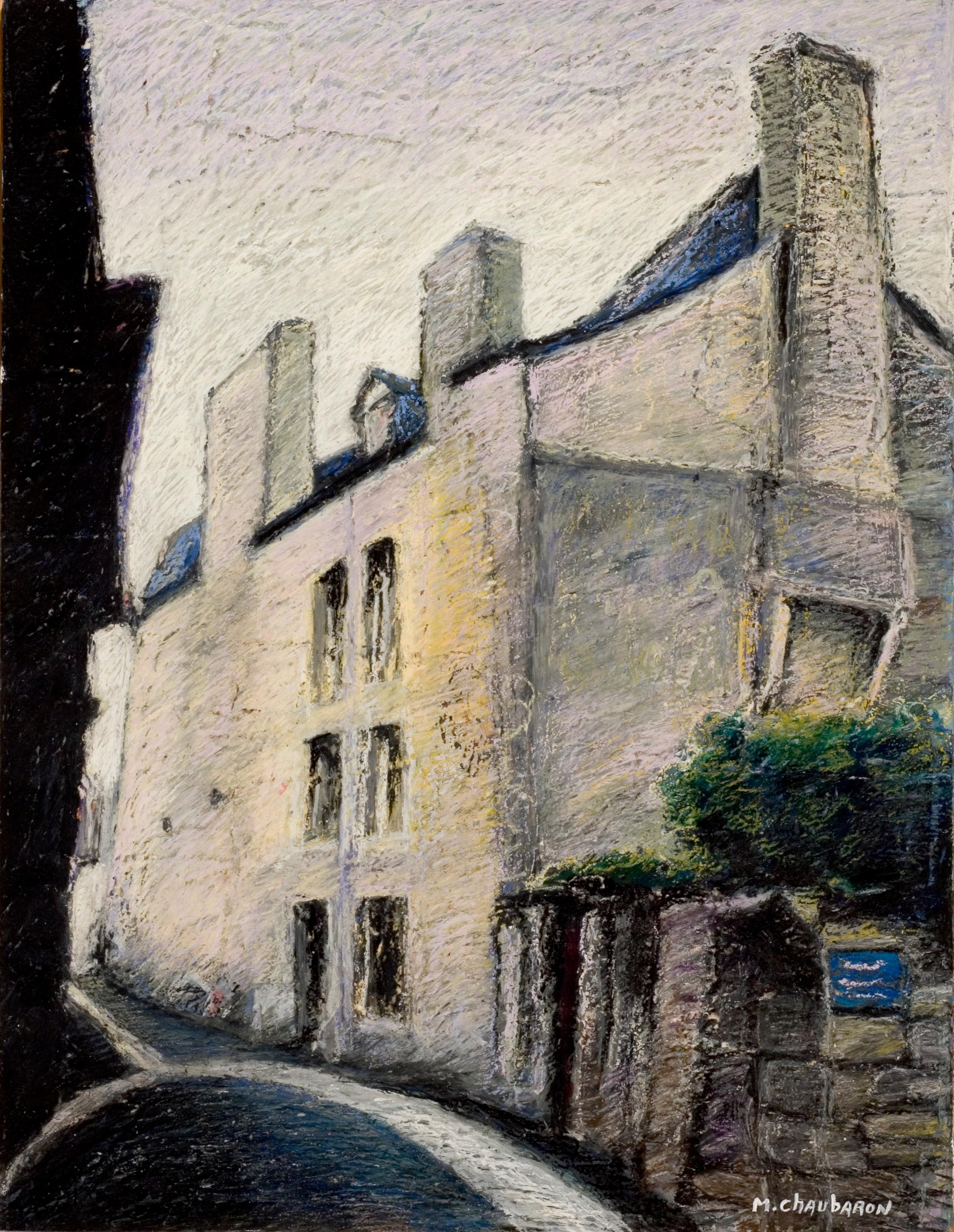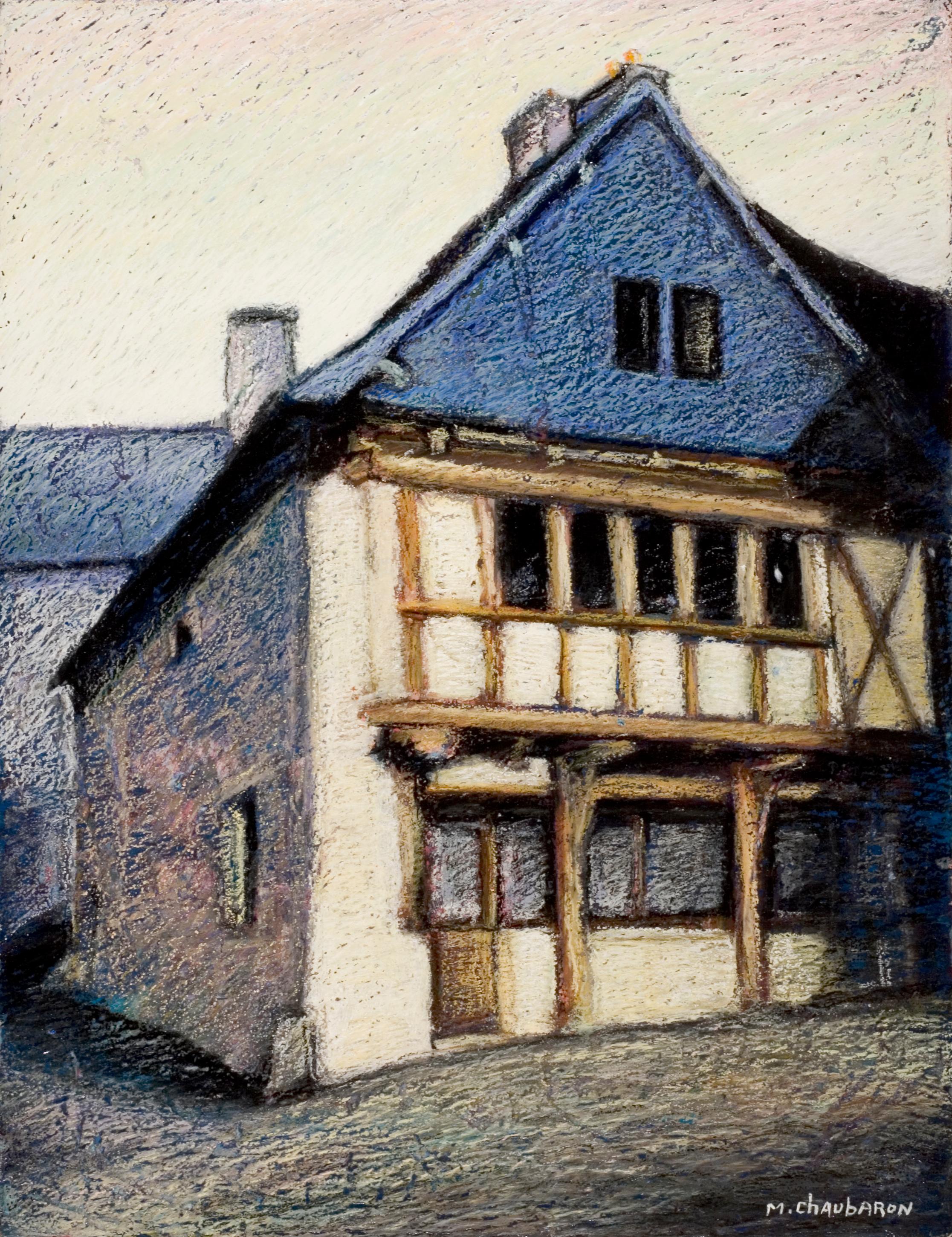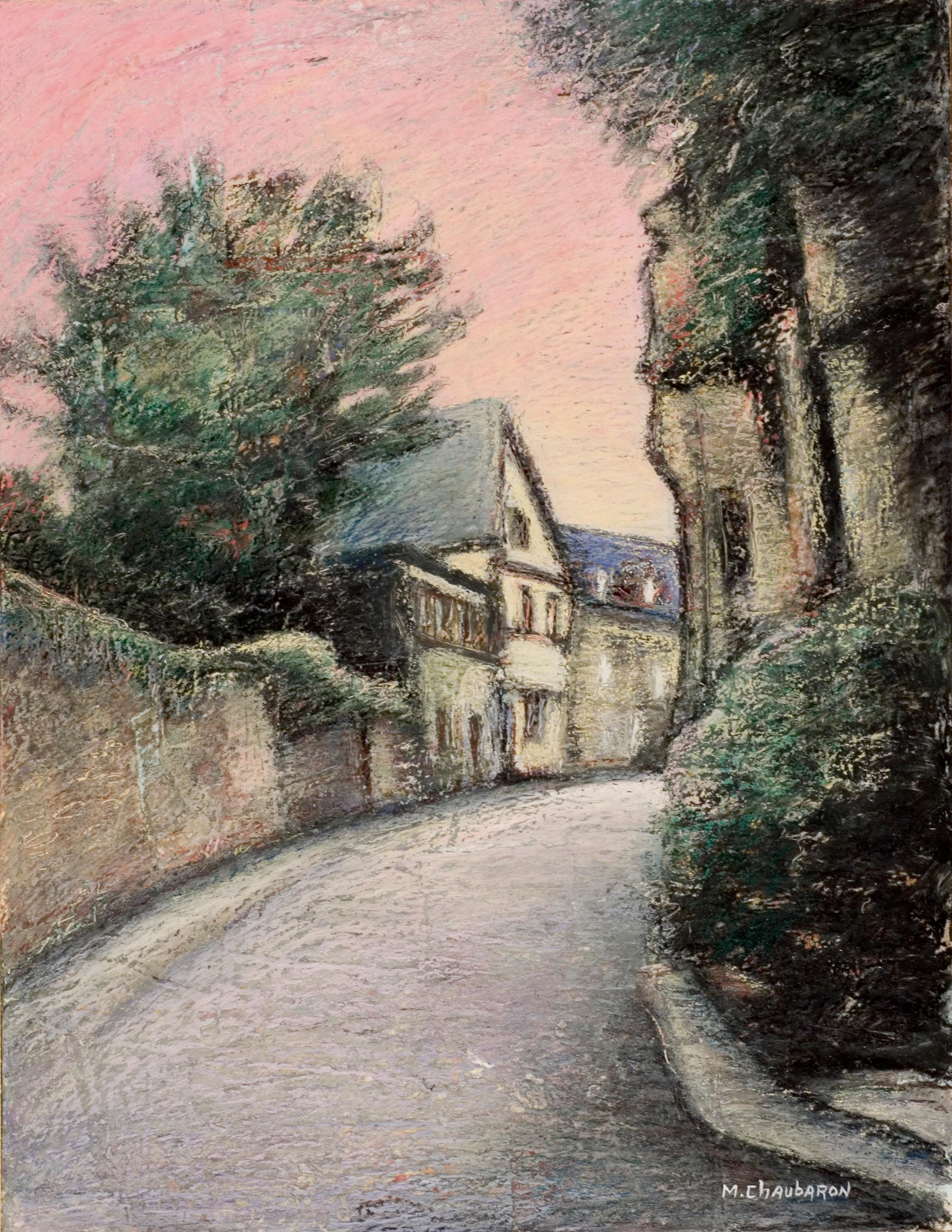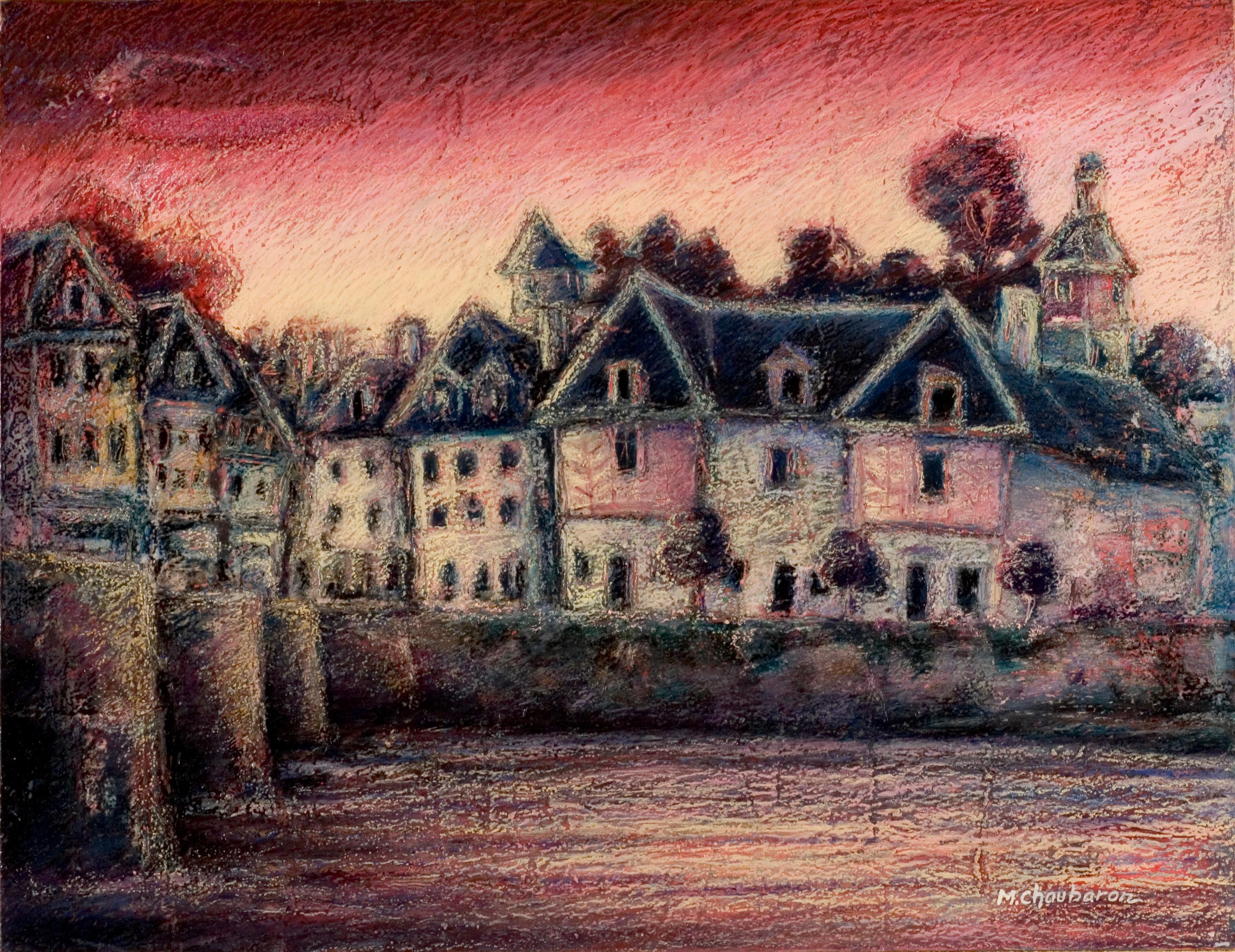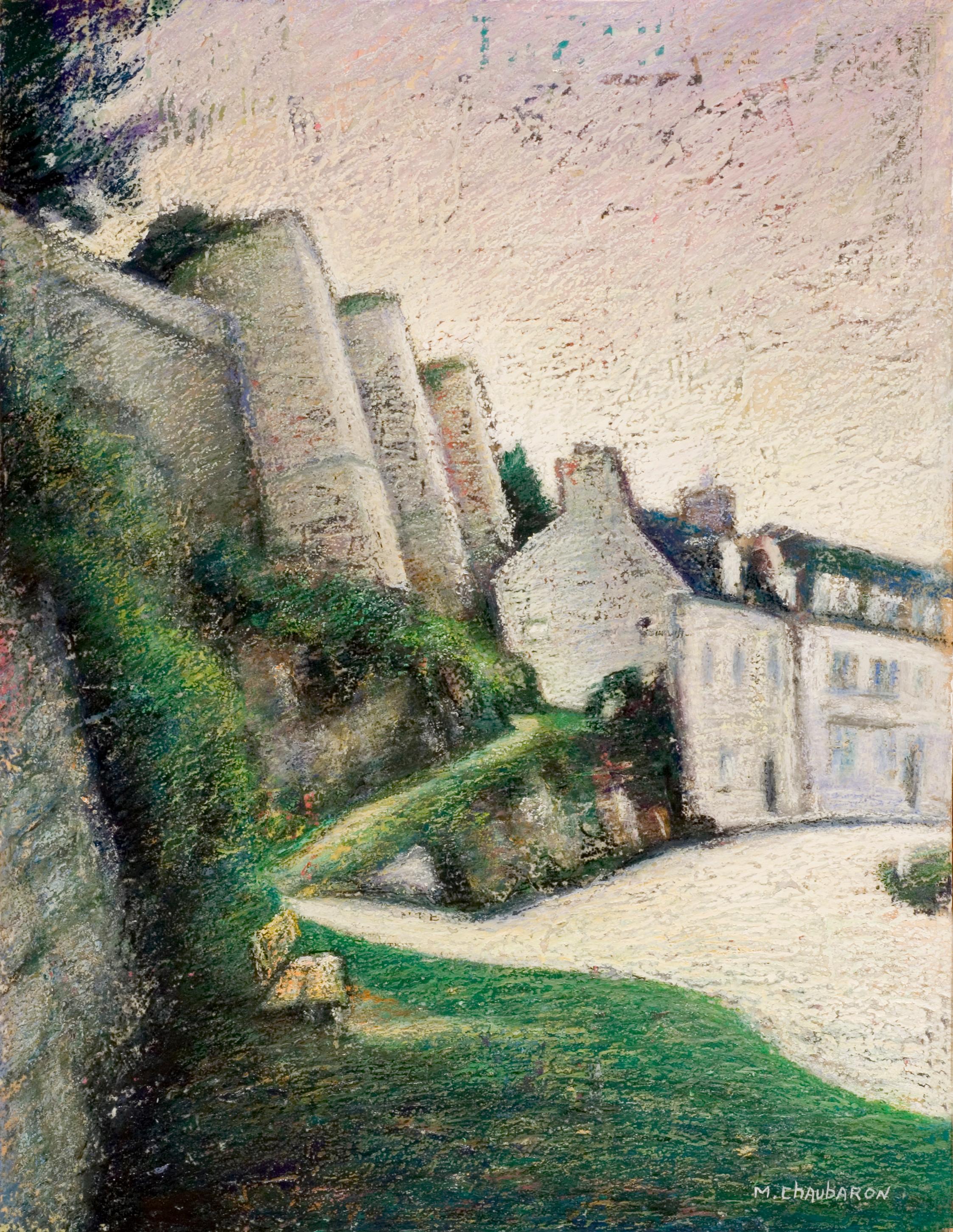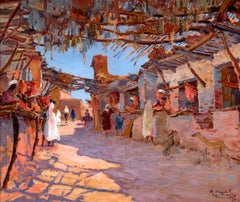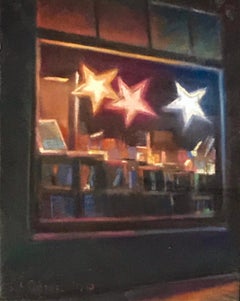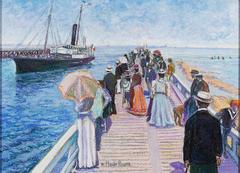
Les Promeneurs de la Jetée by H. Claude Pissarro
View Similar Items
Hughes Claude PissarroLes Promeneurs de la Jetée by H. Claude Pissarro20th Century
20th Century
About the Item
- Creator:Hughes Claude Pissarro (French)
- Creation Year:20th Century
- Dimensions:Height: 17 in (43.18 cm)Width: 22.5 in (57.15 cm)Depth: 0.5 in (1.27 cm)
- Medium:
- Movement & Style:
- Period:
- Condition:
- Gallery Location:New Orleans, LA
- Reference Number:Seller: 30-50961stDibs: LU1861119083
Hughes Claude Pissarro
Hugues Claude Pissarro, also known professionally as H. Claude Pissarro, is the grandson of the Impressionist painter Camille Pissarro and son of Paulémile Pissarro. Born in Neuilly-sur-Seine and enveloped in an artistic environment, he inevitably spent his childhood and youth with brushes in hand. Carrying on the family tradition established by Camille Pissarro, H. Claude’s father frequently took his son on painting excursions, often accompanied by his numerous artistic friends which proved formative for him.
Initially taught by his father, H. Claude first exhibited his work at the age of fourteen. He subsequently studied art in Paris at prestigious establishments, in particular the École Normale Supérieure, a unique French institution dedicated to the pursuit of achievement and excellence to which only the academic elite have access. He also studied art restoration under Henri Linard, head of the laboratory at the Musée du Louvre. It was inevitable that this educational background would lead him to become a professor of art for much of his professional life and in 1963 he accepted an official invitation to teach art in Monaco.
Throughout his teaching career he remained a prolific artist, exhibiting on several occasions in Paris and London. As with many of his family predecessors, the scope of his work and talent is wide-ranging: from engraver, lithographer, publisher and landscape painter to portraitist. He was even commissioned in 1959 to paint a portrait of President Eisenhower.
H. Claude’s work has evolved through a variety of different styles and techniques, including abstract, avant-garde, minimalist and conceptual art. However, he is now perhaps best known for his Post-Impressionist–style works, which have been exhibited throughout the world since 1985.
Find a collection of authentic Hugues Claude Pissarro paintings and other art on 1stDibs.
(Biography provided by Stern Pissarro Gallery)
- L’embarquement by Gaston La ToucheBy Gaston La ToucheLocated in New Orleans, LAGaston La Touche 1854 - 1913 French L’embarquement The Embarkment Signed "Gaston La Touche" (lower right) Oil on panel A fashionable group of merrymakers boards a rowboat at sundown in this oil on panel by renowned French painter Gaston La Touche. Softly lit and lushly detailed, the work represents the artist’s talent for capturing the gaiety of the Belle Époque. With its luminous coloring and feathery brushwork, this oil evokes the style and joie de vivre of the era rendered in La Touche’s distinctive, mature style. Fresh and airy, the work is a beautiful example of the artist’s skill at capturing the subtle qualities of light and color. Set against the plein air backdrop of a wooded pond awash in the soft glow of the golden hour, the scene reflects the influence of the Impressionists. The subject also recalls works by Manet, Monet and Renoir, who delighted in depictions of modern leisure among the expanding middle class. The scene is an informal one, and its unconventional cropping suggests that the viewer is invited to take a seat in the boat and join the group on their outing. Such relaxed, inviting scenes were remarkably popular among contemporary, modern audiences. However, La Touche's style is singular, possessing an element of fantasy and romance that set him apart from the Impressionists. Gaston La Touche was born in St. Cloud, outside of Paris, in 1854, and he showed a keen interest in art from a young age. At ten years old, he began taking private art instruction, which lasted until 1870, when his family was forced to flee to Normandy amid the Franco-Prussian War. This was the only formal art training La Touche would ever receive. Despite his lack of Academy training, he made his debut at the Paris Salon of 1875 with a sculptural medallion and etchings, and he exhibited his first painting at the Salon of 1881. Although he began his career painting dark-toned realist compositions, by 1890, his style had shifted to what would become his signature — a lighter, brighter, idealistic society world. The artist was associated with practically all of the most influential artists and thinkers of late 19th century France, including Édouard Manet, Edgar Degas, Émile Zola, who frequently met at the legendary Cafe de la Nouvelle Athenes to share their thoughts on modern society. In 1900, he was named a Chevalier of the Legion d'Honneur and an Officer in 1909. Additionally, he was well-decorated at the grand...Category
Late 19th Century Impressionist Figurative Paintings
MaterialsPanel, Oil
- Dans le parc en automne, Paris (In the Park in Autumn, Paris)By Jean Francois RaffaëlliLocated in New Orleans, LAThis thoroughly modern Parisian scene was composed by the celebrated French painter Jean François Raffaëlli. The delicate oil captures a familiar subject from late 19th-century life in the city: a busy avenue at the edge of a park on a cool autumn day. Exploring the climate of the city, Raffaëlli's mature works capture the energy of the grand parks and boulevards of the new Paris that emerged at the turn of the century. His legacy documents the realities of urban life during his age, all chronicled in his distinctive brushwork and sophisticated palette. While Raffaëlli was never fully accepted as a member of the Impressionist group, his works display a similar affinity for capturing the transient moments of modern life. His figures exude a sense of being suspended in time, as though they are part of some subtle narrative that is both restless and harmonious. Perhaps more aligned with Naturalism than Impressionism, the visual effect of Raffaëlli's composition is one of carefully composed spontaneity that makes manifest the joie de vivre of the age. Raffaëlli was not the only artist of his era to devote his canvases to the urban landscape. Camille Pissarro, Claude Monet, Gustave Caillebotte and others composed significant works on the subject of the urban milieu. On the whole, it was an entirely new kind of painting, and it was largely influenced by the work of social engineer Baron Haussmann beginning in the 1850s. At the request of Emperor Napoleon III, Haussmann designed and carried out a large-scale urban renewal program, erecting landmarks and tree-lined thoroughfares throughout the city to create a unified and socially-centered urban aesthetic. The city became a glittering stage for modern advancements and bourgeois pleasure, which paved the way for a new kind of subject that was eagerly adopted by the Impressionists and artistic avant-garde. Born in Paris in 1850, Raffaëlli first studied theater and music before turning to painting in 1870. That same year, he submitted a landscape painting to the Salon and was accepted. Aside from just three months studying with the Academic great Jean-Léon Gérôme, Raffaëlli was self-trained, developing his own unique style that brought together Realism, Naturalism and Impressionism. While he managed to exhibit works at both the Salon and the Impressionist exhibitions...Category
Late 19th Century Impressionist Landscape Paintings
MaterialsBoard, Oil
- TaroudantLocated in New Orleans, LASigned, inscribed and dated "R. Pinatel / Taroudant / 1926" (lower right) Oil on panel A stunning ode to the Moroccan landscape, this oil on panel was composed by the French Orientalist painter Raphaël Pinatel, whose lively works adeptly translated the romanticism of the East for a Western audience. The present work, which captures a market in Taroudant, a city in southeastern Morocco, exemplifies the artist’s distinctive approach as he brilliantly translates the energy and atmosphere of the desert city. Pinatel’s style is impressionistic in his brushwork and handling of light and atmosphere. In the present work, he brilliantly captures the effects of the direct desert sun...Category
Early 20th Century Impressionist Landscape Paintings
MaterialsPanel, Oil
- Dimanche au Champ de Course (Deauville) (Sunday at the Racetrack)By Hughes Claude PissarroLocated in New Orleans, LAHugues Claude Pissarro b.1935 French Dimanche au champ de course (Deauville) (Sunday at the Racetrack) Signed “H. Claude Pissarro” (lower left) Pastel on card French artist Hugues Claude Pissarro offers a unique perspective of the racetrack in Deauville in this exceptional pastel. The spectators are as much his subject as the sport in this artistic tribute to a leisurely Sunday at the tracks. Following the impressionist tradition of his father and grandfather before him, Pissarro infuses this pastel with dynamic light and vibrant colors. Entitled Dimanche au Champ de Course (Deauville), it showcases the artist's highly distinctive and sophisticated style. Hailing from a long lineage of painters, Pissarro's artistic talents were cultivated at an early age. He exhibited his first works at the young age of 14 and later studied in Paris at the École du Louvre and École Normale Supérieure. A 1959 White House commission to paint the portrait of President...Category
20th Century Post-Impressionist Landscape Paintings
MaterialsCardboard, Oil Pastel
- Moses and the Pillar of Cloud by Lucas Cranach the Elder and StudioBy Lucas Cranach the ElderLocated in New Orleans, LALucas Cranach the Elder and Studio 1472-1553 German Moses and the Pillar of Cloud Oil on panel Moses and the Pillar of Cloud is a bold and evocative composition that showcases the signature intense color and intricate detail of Lucas Cranach the Elder’s celebrated oeuvre. The remarkable 16th-century oil on panel by Lucas Cranach and his studio captures the narrative moment when Moses leads the Israelites out of Egypt and encounters God manifested through a large pillar of cloud. Moses stands at the precipice of a bridge and turns back to soldiers helping to lead the group of Israelites who huddle closely together. Cranach depicts Moses with his traditional iconography, rendering the rays of light on his head which came to be interpreted as "horns" in the translation of the Bible. Using his traditional walking staff, Moses gestures toward the pillar, seemingly acknowledging that God will protect the group as they cross the bridge to the other side, leaving exile and entering a promised land. In a nod to Cranach’s Germanic locale, he renders the figures and setting in a manner that feels decisively more akin to European aesthetics than those of the Red Sea. Soldiers wear elaborate, gothic suits of armor that recall the livery of Northern European guardsmen. The terrain appears more like a European forest giving way to a sweeping valley than the arid landscape the Israelites trekked through on their journey across the Red Sea. Though still clearly recounting a story from the Old Testament, Cranach renders the cast of characters and setting in an earthly, familiar manner. This aesthetic shift speaks to Cranach’s own changing beliefs as he found himself at the center of the Protestant Reformation. After first gaining recognition in 1505 as the official painter of Frederick the Wise, Cranach established a thriving painting and print studio in Wittenberg, Germany. Cranach was renowned for his court portraits and genre paintings and was also well known for his association with the famous protestant reformer Martin Luther, then under the protection of Frederick the Wise. As Wittenberg became a bastion of new religious thought, Cranach soon befriended Luther and played an active role in creating the printed materials that proliferated throughout the Reformation...Category
16th Century Old Masters Figurative Paintings
MaterialsOil, Panel
- The Adoration of the Magi by Joseph van BredaelLocated in New Orleans, LAJoseph van Bredael 1688-1739 Flemish The Adoration of the Magi Oil on copper Painted on copper and exhibiting an exquisite luminosity, this exceptional painting...Category
Late 17th Century Old Masters Figurative Paintings
MaterialsCopper
- Les EtoilesBy Bruce A GómezLocated in Denver, COStorefront with illuminated starsCategory
2010s American Impressionist Figurative Paintings
MaterialsPastel
- Outlook of the city 1960. paper, pastel. 29x40 cmBy Aleksandra BelcovaLocated in Riga, LVOutlook of the city 1960. paper, pastel. 29x40 cm "Outlook of the City" is an evocative and vibrant artwork that offers a glimpse into the urban landscape of the 1960s. Through the expressive use of pastels on paper, the artist aims to capture the essence and energy of the city, inviting viewers to immerse themselves in the sights and sounds of this bustling urban environment. Aleksandra Belcova...Category
1960s Impressionist Landscape Paintings
MaterialsPaper, Pastel
- "Couple on Bench at the Beach" Pastel on Paperboard signed by Francesco SpicuzzaBy Francesco SpicuzzaLocated in Milwaukee, WI"Couple on Bench at the Beach" is an original pastel drawing on paperboard by Francesco Spicuzza. The artist signed the piece in the lower left. This drawing depicts two figures sitting on a bench in front of a body of water. The artist used mostly pastel colors for this piece. 6 7/8" x 9 7/8" art 18 1/2" x 21 3/8" frame Francesco J. Spicuzza, born in Sicily on July 23, 1883, came to America at the age of 8. He supported himself as a fruit peddler until a newspaperman gave him $4 a week to go to school. He attended classes at the Milwaukee Art Students League, where he studied under Alexander Mueller. There he learned to paint in the then-fashionable "Munich School" technique, with detailed realism in heavy browns and grayed-out hues. Spicuzza completed eight grades in four years, and then in 1911, three businessmen advanced him enough money to allow him to study in New York under artist and teacher John Carlson. It was during this time that Spicuzza changed his style of painting, developing an impressionistic use of color, form and atmospheric renditions. After a period of grinding poverty, one of Spicuzza's pictures won a major New York competition. It was the first of 60 wins, both in the U.S. and Paris. He became a fashionable painter, and many of the leading collections have his work. Spicuzza's typical works were beach scenes, still life, landscapes and portraits done in pastels, oils, ink, charcoal and watercolors. Much of his work traced the history of Milwaukee in the early 1900s. He was probably best known for his scenes of women and children splashing in the waves...Category
1910s Impressionist Figurative Paintings
MaterialsPaper, Pastel, Board
- Hallman's, American Impressionist Landscape with Figures and FarmhouseBy Albert Van Nesse GreeneLocated in Doylestown, PA"Hallman's" is a landscape with figures and farmhouse, by American Impressionist painter Albert Van Nesse Greene. The painting is a 13.5" x 19....Category
Mid-20th Century American Impressionist Landscape Paintings
MaterialsPastel, Archival Paper
- Gerald Gardiner, Harvesting scene with rainbowLocated in Harkstead, GBA bucolic scene at harvesting time Gerald Gardiner (1902-1959) Harvesting time Signed and dated 1944 Oil on paper 10½ x 15¾ inches Landscape painter ...Category
Mid-20th Century Impressionist Landscape Paintings
MaterialsOil, Paper, Oil Pastel
$1,536 Sale Price20% Off - Summer on my Deck, Oil Pastel on Canvas by Erik FreymanBy Erik FreymanLocated in Long Island City, NYAn Impressionist drawing painting of a cat and flowers on a deck by contemporary artist Erik Freyman. Oil and pastel on board, signed in pen Size: 14...Category
Early 2000s American Impressionist Landscape Paintings
MaterialsOil Pastel
$960 Sale Price20% Off
Recently Viewed
View AllRead More
Wear Louis Comfort Tiffany’s Genius on Your Finger with This Vivid Ring
In his jewelry making, the designer rarely used diamonds — this rare example has two.
You Won’t Find a More Handsome Stopwatch Than This 1890s Pocket Chronograph
A Grand Complication from the golden era of pocket watches, the Marius Lecoultre pocket watch does everything but uncork your wine.
